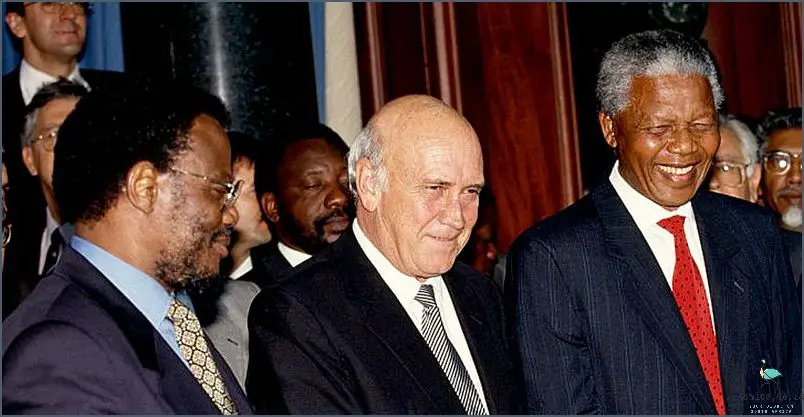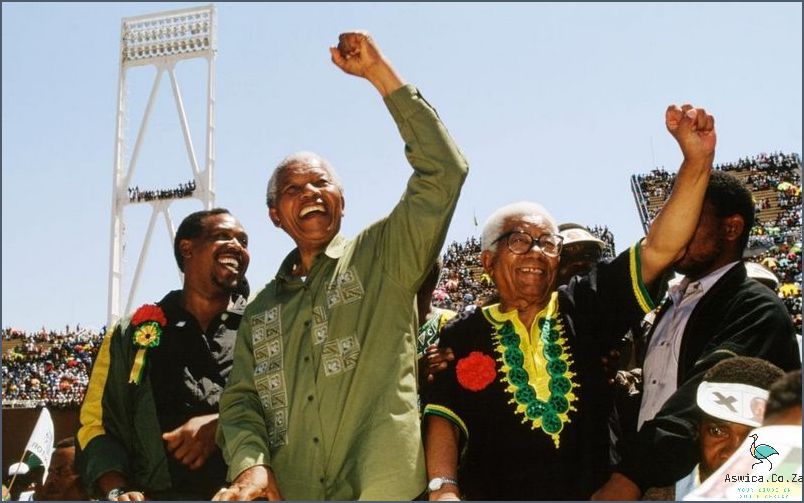
In 1994, South Africa underwent a political and social transformation that would change the course of its history forever. After decades of oppressive apartheid rule and racial segregation, the country held its first democratic elections and Nelson Mandela was elected as the first black president of South Africa. This marked the beginning of a new era as the country moved away from its oppressive past and towards a more equal and tolerant society. The election of Mandela ushered in a period of reconciliation and forgiveness for all South Africans, regardless of race or background. During this time, the country also saw the dismantling of institutionalized racism, greater access to education, healthcare and other services, the adoption of a new constitution, and the recognition of 11 official languages. In addition, the African National Congress, the country’s ruling political party, made considerable efforts to improve the economy and reduce poverty. All of these changes helped to create a more unified and prosperous nation.
Contents
- 1 What Happened In 1994 In South Africa
- 2 Nelson Mandela Became President: Nelson Mandela was sworn in as South Africa’s first black president on May 10th, 1994, marking the end of centuries of white minority rule.
- 3 South African Constitution Was Adopted: The South African Constitution was adopted in December 1994 and was the first in the world to explicitly prohibit discrimination based on sexual orientation.
- 4 The Truth and Reconciliation Commission Was Established: The Truth and Reconciliation Commission was established in 1995 to investigate human rights abuses committed during the period of apartheid.
- 5 Conclusion
What Happened In 1994 In South Africa
In 1994, South Africa experienced a monumental change in politics. After decades of Apartheid, the first democratic elections were held in the country. The African National Congress, led by Nelson Mandela, won the majority of votes, and Mandela was elected as the first black President of South Africa. This event marked the end of the Apartheid system and the beginning of a new era of democracy and equality in South Africa. The election was celebrated around the world, as it represented a major step towards racial unity and justice in a country that had seen so much violence and inequality.
Nelson Mandela Became President: Nelson Mandela was sworn in as South Africa’s first black president on May 10th, 1994, marking the end of centuries of white minority rule.
The year 1994 was a turning point in South African history as Nelson Mandela, the anti-apartheid leader and political prisoner, was sworn in as the country’s first black president. His election signified the end of centuries of white minority rule and ushered in a new era of democracy, fairness, and equality for all South Africans.
On May 10th, 1994, Mandela made history by becoming the first democratically elected president of South Africa. His inauguration was a joyous affair, attended by over 70,000 people. The event was broadcast throughout the world, and South Africans of all backgrounds celebrated the momentous occasion.
During his inaugural address, Mandela said, “Let there be justice for all. Let there be peace for all. Let there be work, bread, water and salt for all.” These words, now famously known as the “Let There Be” speech, were a rallying cry for unity and a call to action to build a better South Africa.
Mandela’s election marked a turning point in South Africa’s history and set the stage for a new era of democracy and freedom. Under his leadership, the country passed a new constitution and established a Truth and Reconciliation Commission to investigate human rights abuses committed during apartheid. The Commission’s work helped to heal the nation and restore the dignity of its citizens.

In the years since Mandela’s election, South Africa has made great strides in overcoming its past and building a brighter future. While there is still much work to be done, Mandela’s legacy and the progress that has been made since his election is a testament to the power of hope and the potential for positive change.
South African Constitution Was Adopted: The South African Constitution was adopted in December 1994 and was the first in the world to explicitly prohibit discrimination based on sexual orientation.
1994 was a landmark year for South Africa and its citizens. The South African Constitution was adopted in December of that year, making it the first constitution in the world to explicitly prohibit discrimination based on sexual orientation. This momentous event marked the beginning of a new era of equality and justice for the South African people.
The South African Constitution was drafted in a multi-party process that began in 1993. This process was led by the African National Congress, which had been the main political force behind the anti-apartheid movement. The new constitution, which was adopted in December 1994, was designed to guarantee the rights of all South African citizens, regardless of their race, gender, religion, or sexual orientation.
The South African Constitution had a profound impact on South African society, ushering in a new era of equal rights and freedom. In addition to prohibiting discrimination based on sexual orientation, the constitution also provided for a range of other rights and liberties, such as the right to vote, the right to an education, and the right to freedom of expression.
The adoption of the South African Constitution was a momentous event in South African history and was celebrated by South Africans of all backgrounds. It was an important step towards a more equitable and just society, and it is still seen as a symbol of South African progress.
The South African Constitution has been amended several times since its adoption in 1994, but its core principles still remain the same. The constitution continues to be a cornerstone of South African society and is a testament to the progress that has been made in the country since the end of apartheid.
The Truth and Reconciliation Commission Was Established: The Truth and Reconciliation Commission was established in 1995 to investigate human rights abuses committed during the period of apartheid.

The year 1994 marked a major milestone in South Africa’s history – the end of the apartheid system and the beginning of a new era of democracy. After decades of repression, the African National Congress (ANC) led by Nelson Mandela was elected to power in South Africa’s first democratic elections.
In the months leading up to the elections, South Africa underwent a period of intense political and social transformation. The new government immediately began working to dismantle the remnants of the apartheid regime, including the notorious security forces and the racially discriminatory laws that had been in place since 1948.
The new government also sought to bring the perpetrators of human rights abuses during the apartheid era to justice. In 1995, the Truth and Reconciliation Commission (TRC) was established to investigate the abuses and offer amnesty to those who had committed them.
The TRC was tasked with uncovering the truth about the atrocities committed during the apartheid period, and to promote national reconciliation and healing. Over the course of its three-year mandate, the TRC heard testimony from more than 21,000 victims of human rights violations, who told of the horrific acts they had suffered at the hands of the apartheid regime.
The TRC’s work was not without controversy. Critics argued that it was too lenient in its treatment of perpetrators, and that granting amnesty to those who had committed the most serious crimes was unjust. Nevertheless, the TRC’s work was instrumental in helping South Africans to come to terms with their past and build a foundation for a more just and equitable society.
The legacy of the TRC is still felt today. Its work helped to promote a culture of human rights and accountability in South Africa, and its recommendations were instrumental in shaping the country’s new constitution and laws. The TRC also helped to create an environment in which survivors of apartheid-era abuses could speak out and receive recognition and compensation for their suffering.
The establishment of the TRC was just one part of the remarkable transformation that took place in South Africa in 1994. The end of the apartheid regime marked a new beginning for the country, and the TRC’s work was an essential part of that process.
Conclusion
In 1994, Nelson Mandela was elected as the first black president of South Africa in a landslide victory. This marked the end of apartheid and the beginning of a new era for the country. Mandela’s election was a major step forward in the country’s journey toward reconciliation and democracy.



